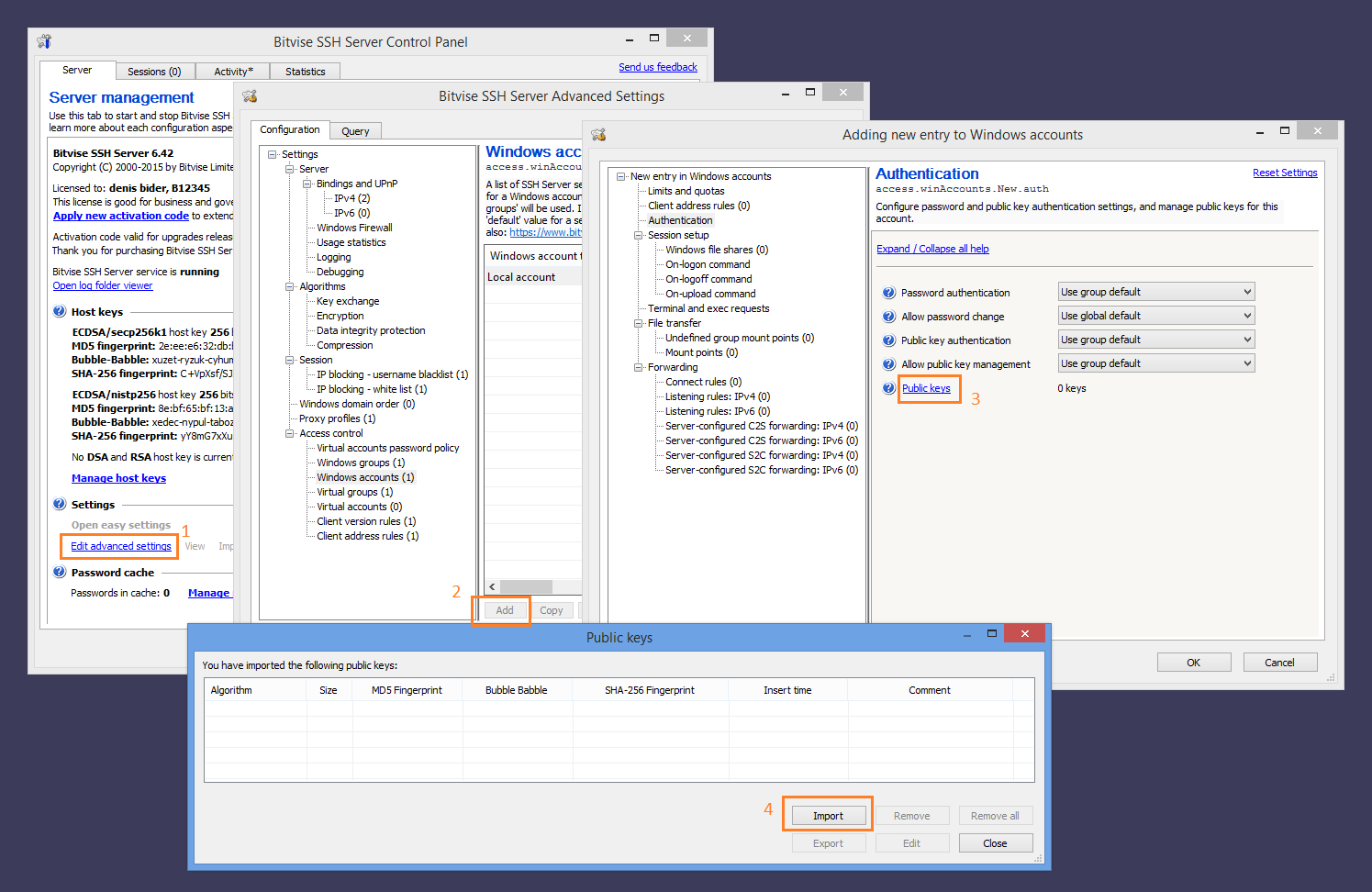
You can optionally specify a passphrase to protect your key material. The ssh-keygen program will prompt you for the location of the key file. At the shell prompt, type the following command: ssh-keygen -t rsa Create a Key Pair on Your Computer Linux and MacOS X In all cases, however, the procedure has three steps: create a key pair, change your RightScale SSH preferences, and test to ensure everything works as expected. The procedure for creating a key pair varies depending on your operating system and preferred SSH client. If you find that your user's keys are still in the authorized_keys file after some time has passed and they should not be because they have no server_login permission, please contact our support team for assistance. This is normal - the key should eventually be removed from the authorized_keys file by a daemon that runs - but it only runs periodically at specific intervals so it may not be removed immediately. Important Note: When using Server Login Control (a.k.a Managed SSH) to manage your user's keys, the user's public key may not disappear from the ~/.ssh/authorized_keys file immediately after revoking the 'server_login' permission from that user.
#Ssh send public key how to
This document will show you how to generate a personal SSH key pair and upload the public key to RightScale for use with Server Login Control.

If using a personal key pair, users can easily SSH to cloud instances without going through the RightScale Dashboard.Rather than creating a cloud-specific or RightScale-specific key pair, users can continue to use their preexisting, personal key pair.Private keys are never shared between users.Public-key authorization can be used even in clouds that do not natively support SSH public-key authentication.The server grants and revokes trust in real time as a user's server_login privileges are granted and revoked.When compared to the traditional technique of binding a single, shared SSH key to the server at launch time, Server Login Control has the following advantages:

Once complete, the user that has access to the associate private key will then have access to connect to this host machine.Servers that support Server Login Control populate their SSH authorized-keys file with multiple trusted keys based on policy received from the RightScale Dashboard, typically inserting one public key per user with server_login permission. To allow another to authenticate to the server, just copy and paste their public SSH key into this file and save it. We can see that our public SSH key has been added to this file. This file contains a list of public SSH keys which have been granted access for authentication. Within that folder will be a file named authorized_keys. After SSHing into the remote host, go into the. Since ssh-copy-id is just a helper script, let's find it what it's actually doing in the event we want to manually add keys for authentication in the future. You should now be SSHed into the server without being prompted for a password. To confirm you can ssh into the remote server with your SSH key and without a password, just type ssh and hit enter.
#Ssh send public key password
Once you type in your server password and hit enter, the SSH key will have been copied to the remote server. You'll most likely be prompted for a password. Let's ssh-copy-id followed by the user name that you which to SSH as, followed an followed by the IP address or the host name of the remote host.

There's a simple helper command that makes this really easy, called ssh-copy-id. Instructor: Once you have generated your SSH private and public keys, the next step is to copy the public key to the remote server you wish to authenticate against.


 0 kommentar(er)
0 kommentar(er)
